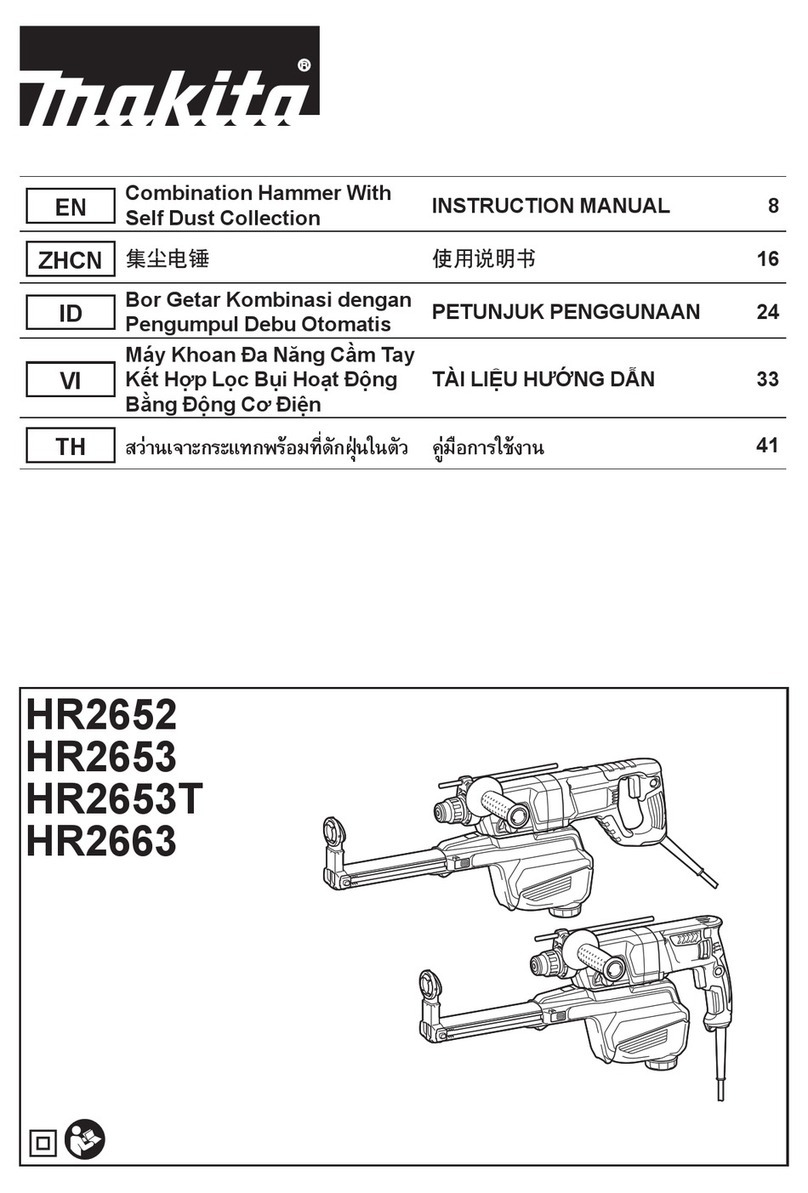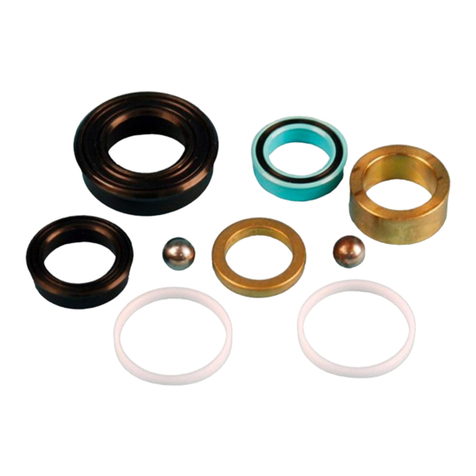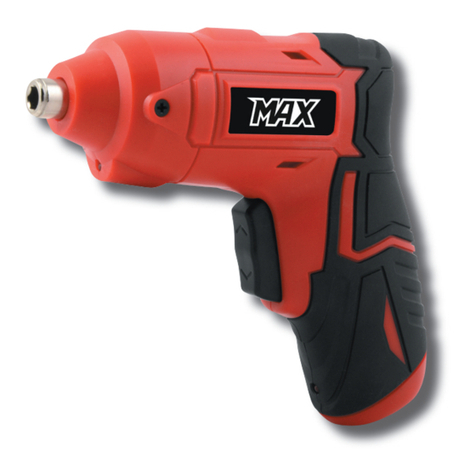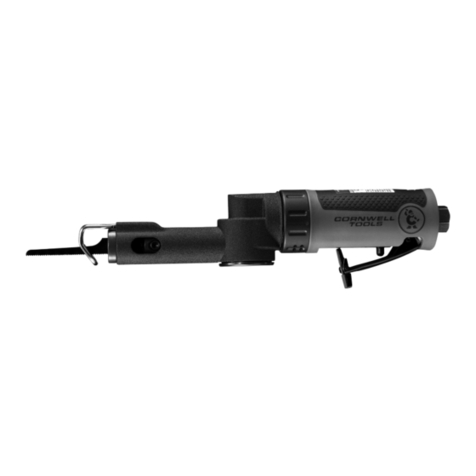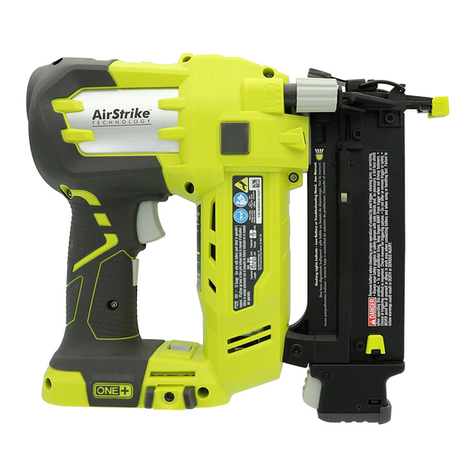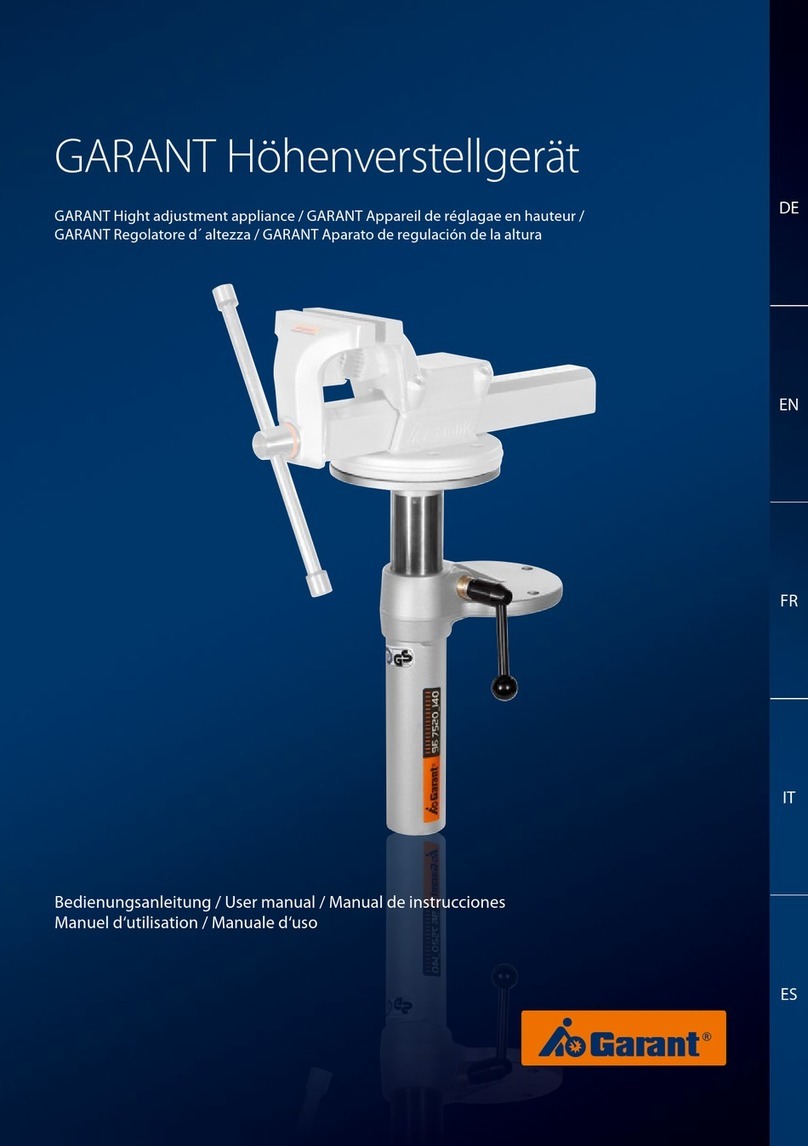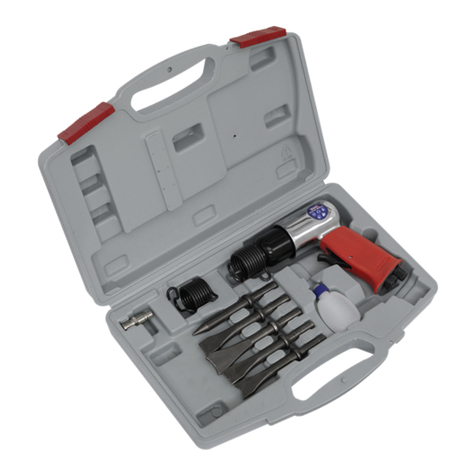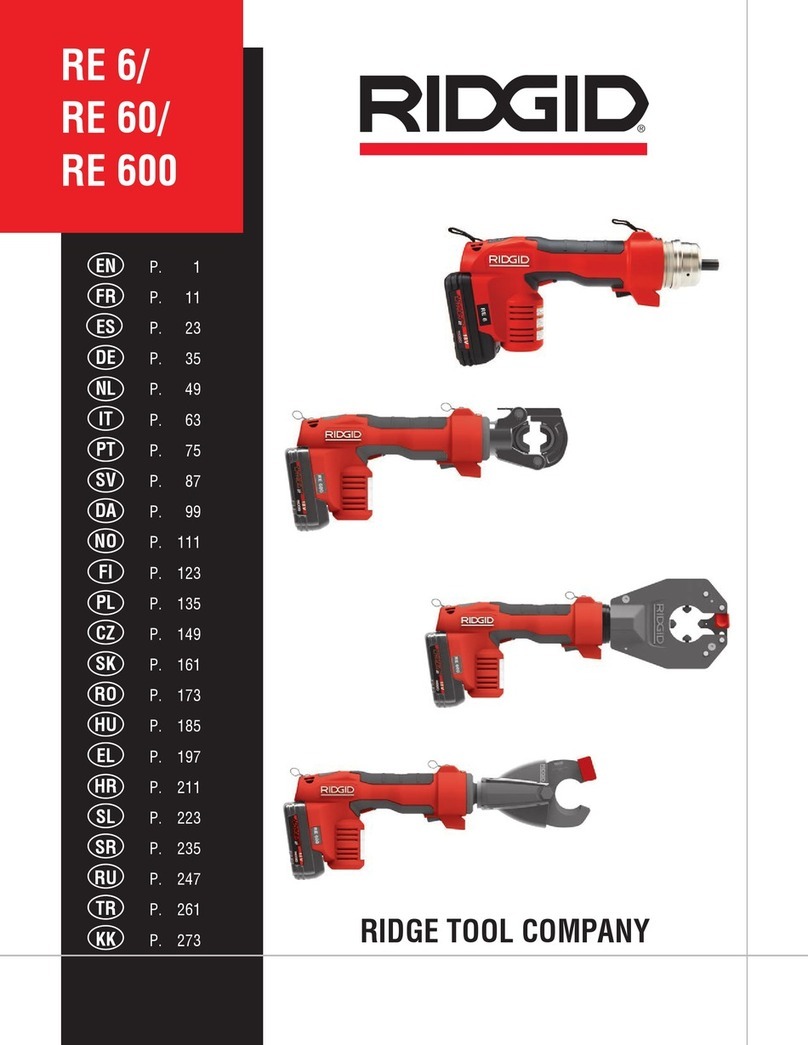Craft Meyer 10002558 User manual

BREMSEN-ENTLÜFTERVENTIL
MIT SCHLAUCH
BRAKE BLEED VALVE AND HOSE
Best.Nr. 10002558
ORIGINAL GEBRAUCHS-
ANLEITUNG
INSTRUCTIONS FOR USE
MODE D'EMPLOI
GEBRUIKSAANWIJZING
ISTRUZIONI PER L'USO
INSTRUCCIONES DE USO
ИНСТРУКЦИЯ ПО
ЭКСПЛУАТАЦИИ
INSTRUKCJA UŻYTKOWANIA

2

3
Original Gebrauchsanleitung
Inhaltsverzeichnis
1 | Lieferumfang 4
2 | Allgemeines 4
2.1 | Gebrauchsanleitung lesen und aufbewahren 4
2.2 | Zeichenerklärung 4
3 | Sicherheit 5
3.1 | Bestimmungsgemäßer Gebrauch 5
3.2 | Sicherheitshinweise 5
4 | Anwendung 7
4.1 | Vorbereitung 7
4.2 | Entlüften 8
5 | Lagerung 8
6 | Reinigung und Pflege 8
7 | Gewährleistung 9
8 | Entsorgung 9
9 | Kontakt 9

BREMSEN-ENTLÜFTERVENTIL MIT SCHLAUCH
1 | Lieferumfang
2 | Allgemeines
2.1 | Gebrauchsanleitung lesen und aufbewahren
Diese Gebrauchsanleitung bezieht sich ausschließlich auf das genannte Craft-
Meyer Bremsen-Entlüfterventil mit Schlauch. Sie enthält wichtige Hinweise zu
Handhabung, Sicherheit und Gewährleistung. Die Anleitung, insbesondere die
Sicherheitshinweise, sorgfältig durchlesen, bevor das Bremsen-Entlüfterventil
verwendet wird. Die Nichtbeachtung kann zu Schäden am Fahrzeug und Folge-
schäden führen. Die Anleitung für die weitere Nutzung aufbewahren. Wenn das
Bremsen-Entlüfterventil an Dritte weitergeben wird, unbedingt diese Anleitung
mitgeben.
Die Gebrauchsanleitung basiert auf den in der Europäischen Union gültigen Nor-
men und Regeln spiegelt den aktuellen Stand der Technik wider. Im Ausland sind
u.U. auch landesspezische Richtlinien und Gesetze zu beachten.
2.2 | Zeichenerklärung
Die folgenden Symbole und Signalwörter werden in dieser Anleitung verwendet.
1Bremsen-Entlüfterventil
2Schlauch
3Gebrauchsanleitung (o. Abb.)
1
2
WARNUNG!
Dieses Signalsymbol/-wort bezeichnet eine Gefähr-
dung mit einem mittleren Risikograd, die, wenn sie
nicht vermieden wird, den Tod oder eine schwere
Verletzung zur Folge haben kann.
4

3 | Sicherheit
3.1 | Bestimmungsgemäßer Gebrauch
Das Bremsen-Entlüfterventil mit Schlauchanschluss verhindert während
des Hydrauliküssigkeitswechsels an der Brems- oder Kupplungshydraulik
des Fahrzeugs das Eindringen von Luft ins System und erleichtert so die
Arbeit erheblich. Bei Verwendung dieses Rückschlagventils ist es nicht mehr
notwendig, wie sonst üblich, nach dreimaligem Pumpen mit dem Hand- oder
Fußhebel die Entlüftungsschraube am Hydraulikzylinder zu schließen, um das
Eindringen von Luft ins System sicher zu vermeiden - die Flüssigkeit kann
„non-stop“ durchgepumpt werden.
3.2 | Sicherheitshinweise
WARNUNG!
Unfallgefahr!
• Nach allen Arbeiten an der Bremsanlage ist die Funktion der
Bremsanlage sorgfältig zu überprüfen, bevor das Fahrzeug
wieder in Betrieb genommen wird.
• Bremsüssigkeit der Klasse DOT 5 (auf Silikonbasis) schmiert
sehr stark und sollte daher nicht auf Bremsscheiben,
Bremsbeläge und Reifen gelangen. DOT5 Bremsüssigkeit
ggf. sofort mit Bremsenreiniger entfernen.
VORSICHT!
Dieses Signalsymbol/-wort bezeichnet eine Ge-
fährdung mit einem niedrigen Risikograd, die, wenn
sie nicht vermieden wird, eine geringfügige oder
mäßige Verletzung zur Folge haben kann.
HINWEIS! Dieses Signalwort warnt vor möglichen Sachschä-
den.
Dieses Symbol gibt Ihnen nützliche Zusatzinforma-
tionen zum Zusammenbau oder zum Betrieb.
Dieses Symbol kennzeichnet die Wiederverwert-
barkeit von Verpackungen und Produkt selbst.
5

• DOT 5 Bremsüssigkeit niemals mit Bremsüssigkeiten der
Klasse DOT 3 oder DOT 4 mischen.
WARNUNG!
Gefahren für Kinder und Personen mit verringerten physi-
schen, sensorischen oder mentalen Fähigkeiten (beispielswei-
se teilweise Behinderte, ältere Personen mit Einschränkung
ihrer physischen und mentalen Fähigkeiten) oder Mangel an
Erfahrung und Wissen (beispielsweise ältere Kinder)!
• Zum Lieferumfang gehörende Verpackungsfolie von Kindern
fernhalten, da Erstickungsgefahr besteht.
VORSICHT!
Vergiftungsgefahr!
• In der hydraulischen Bremsanlage bendet sich Brems-
üssigkeit. Bremsüssigkeit der Klassen DOT 3, 4 und 5.1
greift Lack an und ist giftig. Sie darf deshalb niemals in
Getränkeaschen aufbewahrt werden.
• Wurde Bremsüssigkeit versehentlich getrunken, so ist sofort
ärztliche Hilfe in Anspruch zu nehmen.
• Gelangt sie in die Augen, muss sofort mit viel Wasser gespült
werden.
HINWEIS!
Beschädigungsgefahr!
• Bremsüssigkeit auf lackierten Fahrzeugteilen immer sofort
mit reichlich klarem Wasser abwischen.
6

4 | Anwendung
4.1 | Vorbereitung
Zum Wechsel der Hydrauliküssigkeit und dem Entlüften des Hydrauliksystems
das Fahrzeug sicher aufbocken und eine undurchlässige Unterlage unter das
Fahrzeug legen, damit nicht versehentlich Hydrauliküssigkeit in die Umwelt
gelangen kann.
DOT 3, 4 und 5.1 Bremsüssigkeit ist hygroskopisch (wasserziehend)
und sollte daher alle zwei Jahre komplett gewechselt werden. Manche
Hersteller schreiben bereits eine jährliche Erneuerung der Bremsüs-
sigkeit vor. Silikonbremsüssigkeit DOT 5 (meistens in Harley-Davidson
Modellen) ist nicht hygroskopisch. Die jeweiligen Wartungsintervalle der Fahr-
zeug-Bedienungsanleitung entnehmen.
VORSICHT!
Vergiftungsgefahr!
DOT 3, 4 und 5.1 Bremsüssigkeit ist giftig und greift Lack an!
• Die Hände bei der Arbeit mit entsprechenden Handschuhen
schützen und ggf. eine Schutzbrille tragen.
HINWEIS!
Beschädigungsgefahr!
Unbedingt darauf achten, dass Bremsüssigkeit nicht auf
lackierte Flächen tropfen kann.
• Das Umfeld vorher sorgfältig abdecken.
Bremsüssigkeitstropfen sofort mit reichlich Wasser entfernen.
7

• Unter keinen Umständen eine DOT 5 Bremsüssigkeit mit den
Klassen DOT 3, DOT 4 oder DOT5.1 mischen.
4.2 | Entlüften
Einen passenden Ringschlüssel auf die Entlüftungsschraube am zu entlüftenden
Hydraulikzylinder (hat ein System mehrere Hydraulikzylinder, wird zuerst der von
der Armatur am weitesten entfernte Zylinder entlüftet) aufsetzen. Anschließend
das kurze Schlauchende auf die Entlüftungsschraube (1) aufstecken und das
lange Schlauchende in ein leeres Gefäß (z.B. Marmeladenglas o.ä.) führen. Die
Flüssigkeit muss in Richtung der Feilmarkierung durch das Ventil abfließen,
damit dieses den Rückstrom abschneiden kann. Die Entlüftungsschraube mit
dem Ringschlüssel am Hydraulikzylinder um eine halbe Umdrehung öffnen.
Anschließend die Hebelarmatur z.B. am Lenker waagerecht ausrichten und das
Reservoir öffnen. Nun mit dem Hand- oder Fußhebel die alte Flüssigkeit aus dem
System auspumpen - es ist zu sehen, wie diese und ggf. Luft aus dem System
über den Schlauch und das Ventil in das Gefäß gedrückt wird. Rechtzeitig, bevor
das Reservoir leerläuft, frische Hydraulikflüssigkeit einfüllen (nicht zu lange war-
ten – läuft das Reservoir leer, wird beim Pumpen Luft angesogen, die mühsam
wieder ausgepumpt werden müsste). Weiterpumpen, bis nur noch neue, saubere,
luftblasenfreie Flüssigkeit durch den Schlauch ins Gefäß gelangt. Bei Bedarf
zwischenzeitlich noch einmal Bremsflüssigkeit nachfüllen. Zum Beenden des
Entlüftens, den Hand- oder Fußhebel beim letzten Pumpstoß gedrückt/ gezogen
halten und gleichzeitig die Entlüftungsschraube am Hydraulikzylinder schließen.
Nun ein paar Mal den Bedienhebel vor und zurück bewegen - es muss sich ein gu-
ter, fester Druckpunkt aufbauen, dann ist das System gut entlüftet (widrigenfalls
noch einmal entlüften). Das Reservoir abschließend bis zur Maximal-Markierung
auffüllen, die Gummidichtung im Deckel trockenwischen und die Hydraulikein-
heit wieder verschließen. Das Entlüftungsventil von der Entlüftungsschraube
abnehmen und vor Fahrtantritt noch einmal prüfen, dass die Hydraulikeinheit am
Fahrzeug ordnungsgemäß und verkehrssicher funktioniert.
5 | Lagerung
Das Bremsen-Entlüfterventil sorgsam behandeln. Am besten bewahrt man es
gereinigt an einem trockenen Ort in der Originalverpackung auf.
6 | Reinigung und Pege
Nach jeder Anwendung wird das Bremsen-Entlüfterventil mit klarem Wasser
gründlich durchspült und abgetrocknet.
8

7 | Gewährleistung
Für das vorliegende Produkt gilt die gesetzliche Gewährleistung von zwei Jahren.
Der Gewährleistungszeitraum beginnt ab dem Kaufdatum. Gebrauchsspuren,
Zweckentfremdung, nicht bestimmungsgemäßer Gebrauch und Schäden, die aus
einem Unfall, einer Manipulation oder einem Reparaturversuch durch unautori-
sierte Personen resultieren, sind von der Gewährleistung ausgeschlossen.
8 | Entsorgung
Verpackungsmaterial sowie das Produkt selbst, sind gemäß den
regionalen behördlichen Bestimmungen zu entsorgen.
9 | Kontakt
Bei Fragen zum Produkt und/ oder dieser Anleitung bitte vor dem ersten Ge-
kontaktieren. Wir helfen schnell weiter. So gewährleisten wir gemeinsam, dass
das Produkt korrekt benutzt wird.
Hergestellt in China
9

10
Translation of original instructions for use
Contents
1 | Scope of delivery 11
2 | General information 11
2.1 | Reading and keeping the instructions for use 11
2.2 | Explanation of symbols 12
3 | Safety 12
3.1 | Intended use 12
3.2 | Safety instructions 12
4 | How to use 14
4.1 | Preparation 14
4.2 | Bleeding 15
5 | Storage 15
6 | Cleaning and care 15
7 | Warranty 16
8 | Disposal 16
9 | Contact 16

11
BRAKE BLEED VALVE AND HOSE
1 | Scope of delivery
2 | General information
2.1 | Reading and keeping the instructions for use
These instructions for use apply exclusively to the aforementioned Craft-
Meyer Brake Bleed Valve and Hose. They contain important information on
handling, safety and warranty. Read these instructions carefully, in particular
the safety instructions, before using the brake bleed valve. Failure to follow
these instructions can cause damage to the vehicle and result in consequential
damage. Keep these instructions for future reference. If you pass the brake bleed
valve on to a third party, you must also hand over these instructions.
The instructions for use are based on the standards and regulations applicable in
the European Union and reect current state-of-the-art technology. When abroad,
you should also observe any specic national guidelines and laws as applicable.
1Brake bleed valve
2Hose
3Instructions for use
(not shown)
1
2

12
2.2 | Explanation of symbols
The following symbols and signal words are used in these instructions.
3 | Safety
3.1 | Intended use
The brake bleed valve with hose connector prevents air from entering into the
system when you are replacing the hydraulic uid for your vehicle's brakes and
clutch hydraulics. It also makes the job considerably easier. When using this
check valve, it is no longer necessary, as is otherwise the case, to close the bleed
screw on the hydraulic cylinder after pumping three times with the hand or foot
lever in order to reliably prevent air from entering into the system- the uid can
be pumped through without stopping.
3.2 | Safety instructions
WARNING!
Risk of accident!
• Once all work on the braking system is complete, carefully
check that the braking system is working before restarting
the vehicle.
WARNING! This symbol/signal word indicates a hazard with a
medium risk level which, if not avoided, may result
in death or serious injury.
CAUTION! This symbol/signal word indicates a hazard with
a low risk level which, if not avoided, may result in
minor or moderate injury.
IMPORTANT! This signal word warns of possible material
damage.
This symbol gives you useful additional information
about assembly or usage.
This symbol indicates that the packaging and the
product itself can be recycled.

13
• DOT 5 class brake uid (silicone-based) lubricates very
strongly and should therefore not be allowed to come into
contact with brake disks, brake linings or tyres. Remove
any DOT5 brake uid immediately with brake cleaner as
necessary.
• Never mix DOT5 brake uid with brake uids of class DOT3
or DOT4.
WARNING!
Danger for children and persons with reduced physical,
sensory or mental abilities (e.g. partially disabled persons,
elderly persons with reduced physical and mental abilities)
or lack of experience and knowledge (e.g. older children)!
• The packaging lm must be kept away from children, as there
is a risk of suffocation.
CAUTION!
Risk of poisoning!
• Brake uid can be found in the hydraulic braking system.
Class DOT3, 4 and 5.1 brake uids corrode paintwork and are
toxic. Therefore they must never be stored in drinking bottles.
• If brake uid is ingested accidentally, seek medical attention
immediately.
• In case of contact with the eyes, ush immediately with
copious amounts of water.
IMPORTANT!
Risk of damage!
• Always wipe off any brake uid from painted vehicle parts
immediately with copious amounts of clear water.

14
4 | How to use
4.1 | Preparation
To replace the hydraulic uid and bleed the hydraulic system, jack up the vehicle
securely and place an impermeable underlay underneath the vehicle so that
hydraulic uid cannot be released into the environment accidentally.
DOT3, 4 and 5.1 brake uids are hygroscopic (absorb moisture)
and should therefore be replaced completely every two years. Some
manufacturers specify changing the uid once a year. DOT5 silicone-
based brake uid (mostly used on Harley-Davidson models) is not
hygroscopic. Refer to the vehicle owner’s manual for the replacement intervals.
CAUTION!
Risk of poisoning!
DOT3, 4 and 5.1 brake uids are toxic and corrode paintwork!
• Protect your hands when working using appropriate gloves
and wear protective goggles as necessary.
IMPORTANT!
Risk of damage!
It is imperative to make sure that the brake uid cannot drip
onto painted surfaces.
• Carefully cover the surrounding area beforehand. Remove
any drops of brake uid immediately with copious amounts
of water.

15
• Do not under any circumstances mix a DOT5 brake uid with
classes DOT3, DOT4 or DOT5.1.
4.2 | Bleeding
Place a suitable box end wrench on the bleed screw on the hydraulic cylinder
which you wish to bleed (if a system has more than one hydraulic cylinder, the
one furthest from the control lever is bled first). Then connect the short ends of
the hose on the bleed screw (1) and place the long end of the hose in an empty
container (e.g. jam jar or similar). The fluid must flow out through the valve in
the direction indicated by the arrow so that the valve can cut off any backflow.
Open the bleed screw with the box end wrench on the hydraulic cylinder by half a
turn. Then align the control lever horizontally, e.g. to the handlebars, and open the
reservoir. Now use the hand or foot lever pump the old fluid out of the system–
you can see how it and any air is forced out of the system through the hose
and the valve and into the container. Before the reservoir empties completely,
pour in fresh hydraulic fluid (do not wait too long– if the reservoir does empty
completely, air will be sucked into the system and will have to be laboriously
pumped out again). Continue pumping until only fresh, clean, bubble-free fluid
is flowing through the hose and into the container. If necessary, top up again
with brake fluid. To complete the bleeding process, hold the hand or foot lever
in the pulled/pushed position with the last stroke of the pump and close the
bleed screw on the hydraulic cylinder at the same time. Then move the operating
lever back and forth a few times– a good, solid pressure point must build up.
This indicates that the system has been bled thoroughly (otherwise, repeat the
bleeding process). Then top up the reservoir to the maximum mark, wipe the
rubber seal in the cover dry and seal the hydraulic unit again. Remove the bleed
valve from the bleed screw and before taking to the road again check once more
that the hydraulic unit on the vehicle is fully functional and roadworthy.
5 | Storage
Handle the brake bleed valve with care. It is best to store it cleaned and in a dry
place, in the original packaging.
6 | Cleaning and care
After every use, the brake bleed valve is ushed thoroughly with clear water and
then dried.

16
7 | Warranty
This product comes with the statutory two-year warranty. The warranty period
begins on the date of purchase. It does not cover normal wear and tear, use for
anything other than the intended purpose, or damage caused by an accident,
manipulation or attempted repairs by unauthorised persons.
8 | Disposal
Dispose of packaging material and the product itself in accordance
with applicable local regulations.
9 | Contact
If you have any questions about the product and/or these instructions, before
using the product for the rst time, please contact our Service Centre by e-mail
to ensure that the product is used correctly.
Made in China

17
Traduction du mode d'emploi original
Table des matières
1 | Équipement fourni 18
2 | Généralités 18
2.1 | Lire et conserver le présent mode d'emploi 18
2.2 | Légende 19
3 | Sécurité 19
3.1 | Utilisation conforme 19
3.2 | Consignes de sécurité 20
4 | Utilisation 21
4.1 | Préparation 21
4.2 | Purge d'air 22
5 | Stockage 23
6 | Nettoyage et entretien 23
7 | Garantie légale 23
8 | Élimination 23
9 | Contact 23

CLAPET DE PURGE DES FREINS AVEC TUYAU
1| Équipement fourni
2| Généralités
2.1| Lire et conserver le présent mode d'emploi
Ce mode d'emploi correspond uniquement au clapet de purge des freins avec
tuyau Craft-Meyer mentionné. Il contient des remarques importantes concernant
la manipulation, la sécurité et la garantie. Lisez attentivement les instructions, en
particulier les consignes de sécurité, dans leur intégralité avant d'utiliser le clapet
de purge des freins. Le non-respect de ce mode d'emploi peut entraîner des
dommages sur le véhicule et des dommages consécutifs. Conservez le présent
mode d'emploi pour l'utilisation ultérieure. Si vous cédez le clapet de purge des
freins à un tiers, veuillez impérativement transmettre le présent mode d'emploi à
la personne correspondante.
Le mode d'emploi se base sur les normes et réglementations en vigueur dans
l'Union européenne et reète l'état actuel de la technique. Le cas échéant,
respectez à l'étranger également les directives et les lois locales.
1Clapet de purge des freins
2Tuyau
3Mode d'emploi (sans ill.)
1
2
18

2.2| Légende
Les symboles et mentions d'avertissement suivants sont utilisés dans le présent
mode d'emploi.
3| Sécurité
3.1| Utilisation conforme
Le clapet de purge des freins avec raccord tuyau empêche la pénétration
d'air dans le système lors du remplacement du liquide hydraulique du circuit
hydraulique de frein ou d'embrayage du véhicule, simpliant ainsi nettement le
travail. L'utilisation de ce clapet de non-retour permet de pomper le liquide sans
interruption, rendant inutile le serrage de la vis de purge du cylindre hydraulique,
étape normalement nécessaire après avoir pompé troisfois avec le levier à
main/la pédale pour éviter de manière sûre la pénétration d'air dans le système.
AVERTISSEMENT!
Ce symbole/cette mention d'avertissement
désigne un danger avec un degré de risque
moyen qui, lorsqu'il n'est pas évité, peut
entraîner la mort ou des blessures graves.
ATTENTION!
Ce symbole/cette mention d'avertissement
désigne un danger avec un degré de risque
faible qui, lorsqu'il n'est pas évité, peut
entraîner des blessures légères ou moyennes.
REMARQUE! Cette mention d'avertissement prévient des
dommages matériels éventuels.
Ce symbole vous donne des informations
supplémentaires utiles pour le montage ou le
fonctionnement.
Ce symbole indique la possibilité de recycler
les emballages et le produit.
19

3.2| Consignes de sécurité
AVERTISSEMENT!
Risque d'accident!
• Après tous les travaux sur le système de freinage, contrôlez
minutieusement son fonctionnement avant de réutiliser le
véhicule.
• Le liquide de frein de catégorie DOT5 (à base de silicone) est
très fortement lubriant et ne doit donc pas entrer en contact
avec les disques et les plaquettes de frein, ainsi qu'avec les
pneus. Le cas échéant, éliminez le liquide de frein DOT5
immédiatement à l'aide de nettoyant pour freins.
• Ne mélangez jamais du liquide de frein DOT5 avec des
liquides de frein des catégories DOT3 ou DOT4.
AVERTISSEMENT!
Ce produit représente un danger pour les enfants et les
personnes dont les capacités physiques, sensorielles ou
mentales sont réduites (parex. personnes souffrant d'un
handicap partiel ou personnes âgées dont les capacités
physiques et mentales sont restreintes) ou les personnes
qui ne disposent pas de l'expérience ou des connaissances
requises (parex. des enfants plus âgés).
• Conservez le lm d'emballage faisant partie de l'équipement
fourni hors de portée des enfants. Risque d'asphyxie.
ATTENTION!
Risque d'intoxication!
• Le système de freinage hydraulique contient du liquide de
frein. Les liquides de frein des catégories DOT3, 4 et 5.1
attaquent la peinture et sont toxiques. C'est pourquoi vous
ne devez en aucun cas les conserver dans des bouteilles de
boissons.
• En cas d'ingestion involontaire de liquide de frein, consultez
immédiatement un médecin.
• En cas de contact avec les yeux, rincez-les abondamment à l'eau.
20
Table of contents
Languages:
Popular Tools manuals by other brands
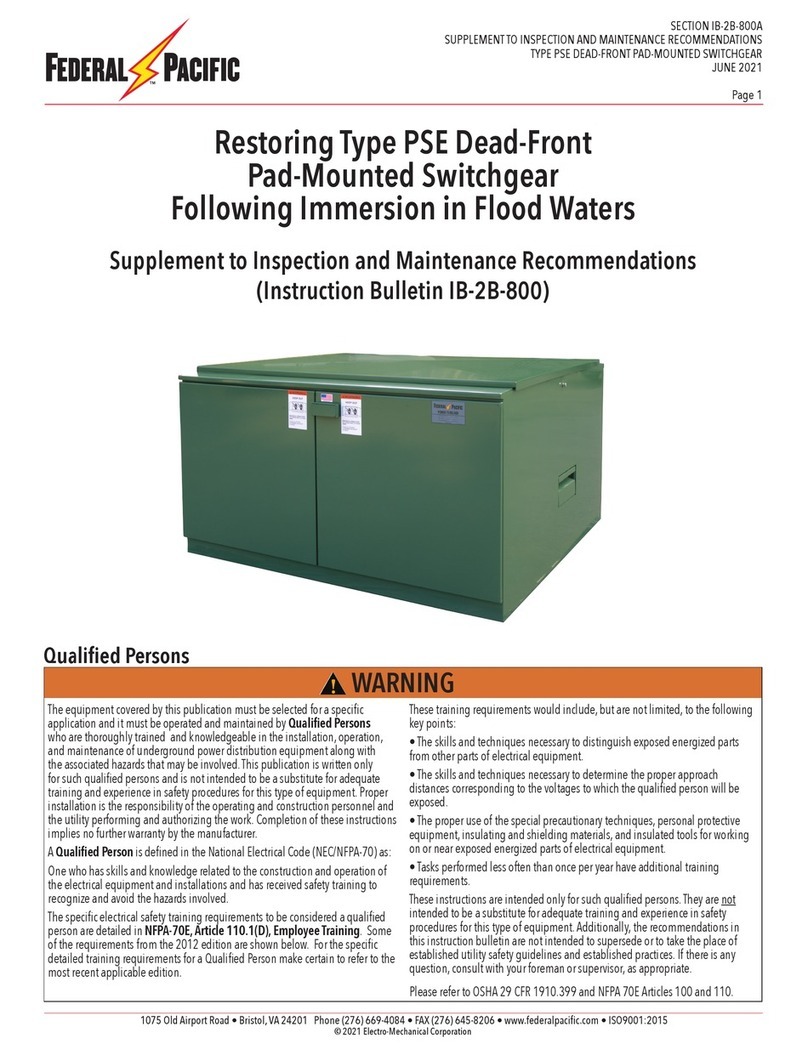
FEDERAL PACIFIC
FEDERAL PACIFIC PSE Supplement to Inspection and Maintenance Recommendations
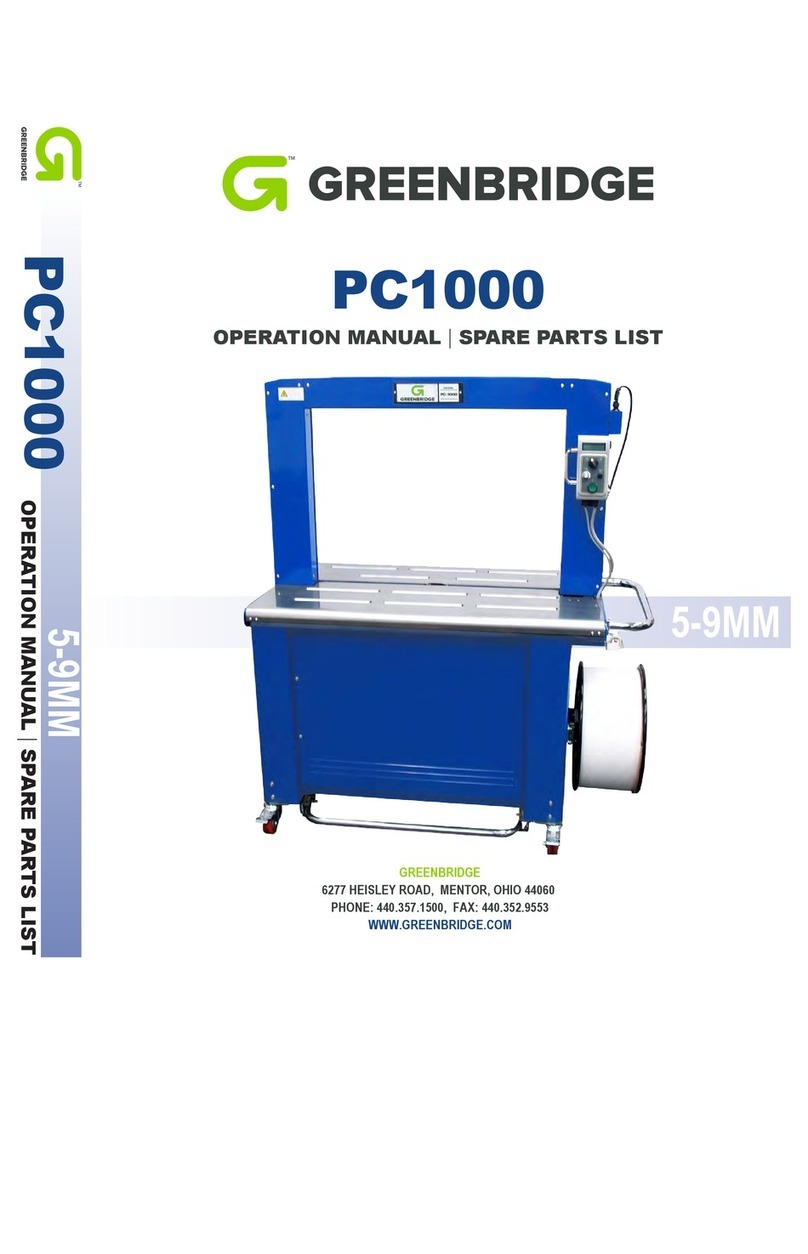
Greenbridge
Greenbridge PC1000 Operation manual

EIBENSTOCK
EIBENSTOCK KBS 250 Original instructions
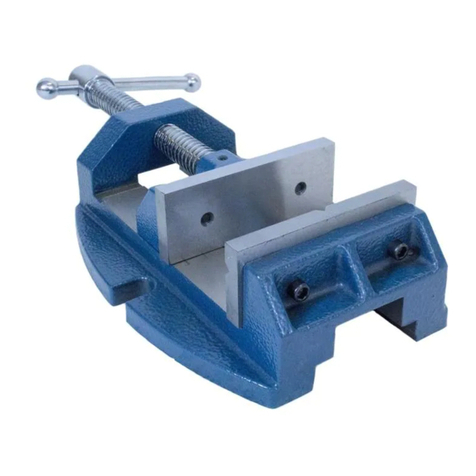
Yost Vises
Yost Vises DPV-5 instructions
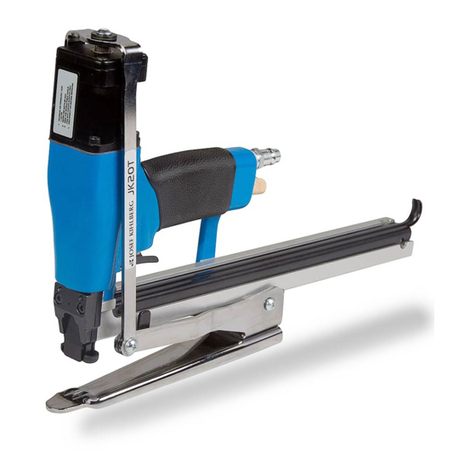
Josef Kihlberg
Josef Kihlberg JK20T operating instructions

HOZAN
HOZAN C-441 instruction manual
